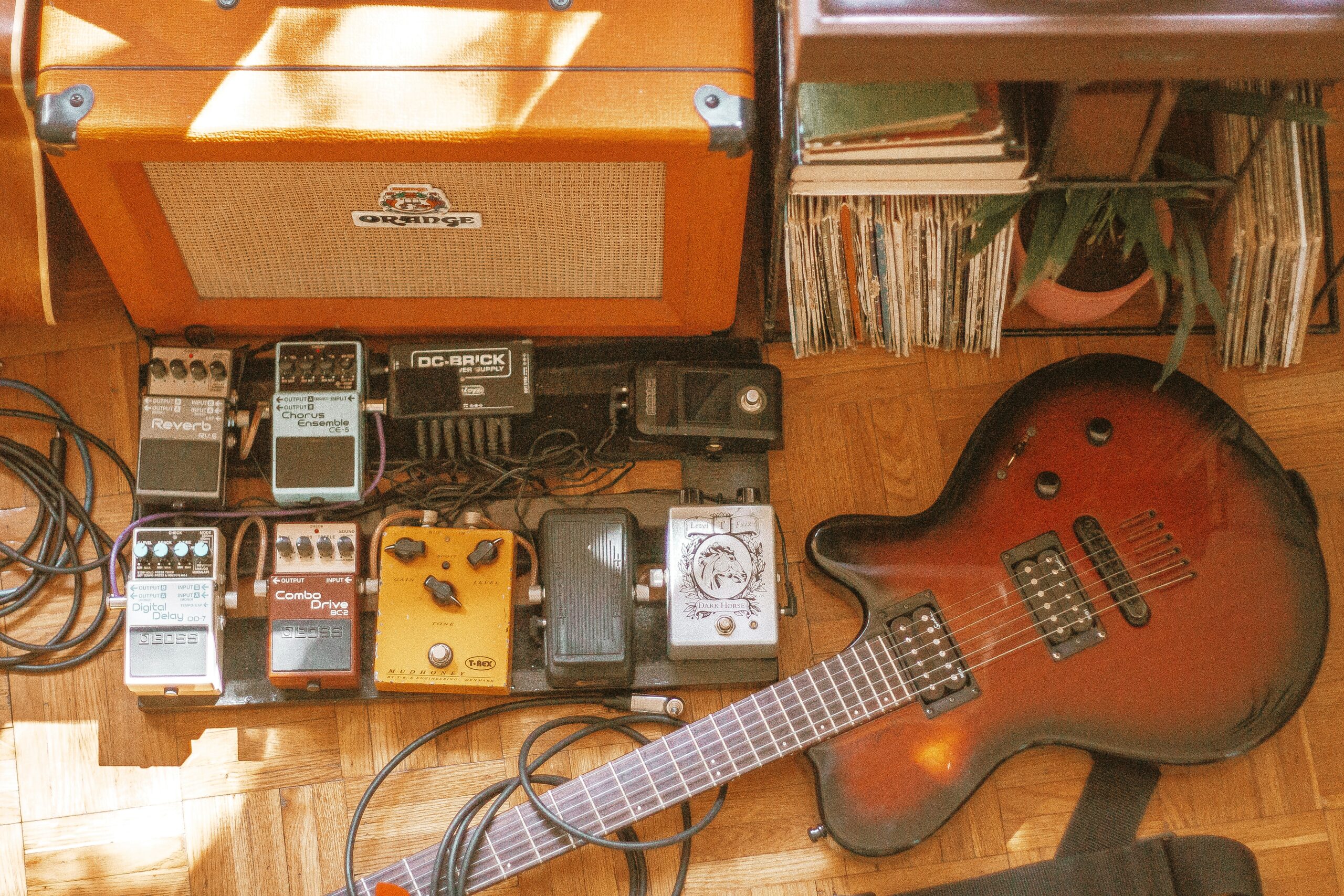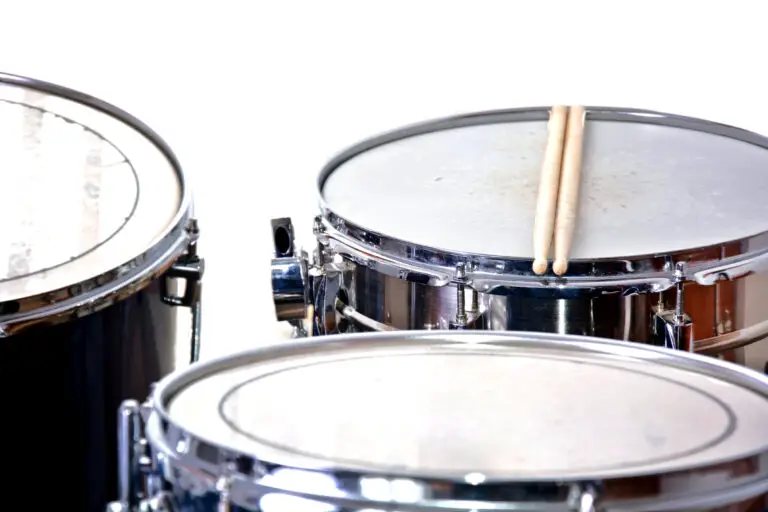What’s The Difference Between Gain And Drive?
When it comes to playing the guitar, everyone is on a quest for that perfect sound, a tone that is uniquely theirs. If you’ve spent time exploring guitar setups, you’ve likely come across the terms “gain” and “drive.”
They might seem a bit technical, maybe even interchangeable, but understanding the difference between the two can be your secret weapon in finding ‘your’ sound.
In simple terms, “gain” helps control how loud your guitar sounds, while “drive” gives your sound a particular character or distortion.
As we dive deeper, we’ll uncover the distinct role each plays, offering easy tips on how to use them to enhance your guitar playing.
Whether you’re playing your first chord or you’ve been rocking out for years, this guide will help you navigate the exciting world of gain and drive to craft the sound you’ve always dreamed of.
What Is Gain?
Defining Gain
Before we dive into the nitty-gritty of gain staging and its role in music production, it’s essential to understand what “gain” actually means.
Essentially, gain refers to the amount of amplification applied to your guitar’s signal.
It’s your first point of contact in shaping the sound that your audience will eventually hear, influencing both the volume and the overall tone of your guitar.
The Technical Definition of Gain
To understand gain on a deeper level, we need to look at it from a technical standpoint.
Gain operates at the pre-amplification stage, controlling the signal level that comes from your guitar before any further processing happens.
Increasing the gain elevates the signal strength, but go too far, and you might introduce unwanted noise and distortion.
Balancing it right ensures a strong signal without losing the clarity and essence of your guitar’s natural sound.
Gain Staging: What is it and Why Does it Matter?
Gain staging is essentially the process of managing the various levels of gain at different points in your signal path.
Why is it crucial?
Proper gain staging ensures that you maintain a high signal-to-noise ratio, avoiding unwanted noise and distortion in your output.
It helps in crafting a sound that is both loud and clear, providing a solid foundation for further mixing and mastering processes.
The Role of Gain in Music Production
In the world of music production, gain is like the unsung hero, working behind the scenes to ensure everything runs smoothly.
It helps in achieving a harmonious balance between different elements in a track, ensuring that the end product is cohesive and polished.
By managing gain properly, producers can manipulate dynamics to create a richer and more layered sound, essentially sculpting the tone to fit the intended musical narrative.
Using Gain in Recording
During the recording process, gain plays a pivotal role in capturing the true essence of an instrument.
It’s about finding the right amount of amplification to record a signal that is robust and full-bodied, without overshadowing other elements in the mix.
Here, the emphasis is on capturing the purest form of the instrument’s sound, setting the stage for a fruitful mixing process later on.
The Influence of Gain on a Mix
As we move to the mixing stage, the role of gain evolves.
It becomes a tool for achieving the right blend of sounds, fostering harmony between various instruments and vocal tracks. It’s about enhancing individual tracks while maintaining a cohesive sound, ensuring that each element can shine without overpowering others.
Proper gain setting at this stage can be the difference between a mix that is dynamic and full of life and one that is flat and lifeless.
Setting the Gain
Setting the gain is an art in itself, requiring a keen ear and a deep understanding of the nuances of sound.
The goal is to find the optimal level of amplification that allows you to capture the richness of your guitar’s sound without introducing unwanted noise.
It involves listening intently and making subtle adjustments to find that sweet spot where everything just ‘clicks’.
Finding the Sweet Spot
Finding the “sweet spot” when setting your gain is about reaching that point where your sound is robust and full-bodied, yet still clear and defined.
It’s a balance between strength and clarity, avoiding the extremes of a signal that is too weak to make an impact or too strong and distorted.
Tips and Techniques for Setting Gain Levels
To wrap up our deep dive into gain, let’s look at some tips and techniques that can help you set gain levels like a pro:
- Start with a Clean Slate: Before making any adjustments, ensure that all levels are set to zero to avoid any initial biases.
- Gradual Adjustments: Make incremental adjustments, listening carefully to the changes in the sound as you increase or decrease the gain.
- Reference Tracks: Use reference tracks to help you gauge the appropriate levels for your sound.
- Avoiding Clipping: Be cautious to avoid clipping, which occurs when the signal is too strong, leading to distortion and a loss of fidelity.
Remember, understanding and mastering gain is a journey, not a destination. With time and experience, you’ll develop an intuitive sense for setting gain levels to achieve the sound you desire.
What Is Drive?
Defining Drive
In the landscape of guitar sound engineering, “drive” emerges as a concept both fundamental and artistic. At its core, drive refers to the saturation or distortion introduced to your guitar’s sound, giving it a warmer, grittier, or even more aggressive tone.
It’s that special ingredient that can transform a clean guitar sound into something with a bit more personality, a bit more ‘oomph’.
Drive: More than Just Amplification
While it can be tempting to equate drive with loudness, it’s actually more about coloring your sound rather than just amplifying it.
It adds texture, introducing rich harmonics and a certain depth to your sound.
It can make your guitar sound crunchy, bluesy, or even give it a fierce, roaring character, allowing for a more expressive and dynamic playing experience.
How Drive Shapes Your Sound
The drive molds your sound, giving it a distinct identity.
It can elevate a simple chord progression into a powerful rhythmic force or turn a basic melody into a soulful expression.
By experimenting with different drive settings, you can explore a variety of different tones, from warm and soft to bright and edgy.
Drive in Effect Pedals
Effect pedals are the playground where you can truly unleash the potential of drive.
Here, drive takes on a multifaceted role, serving both as a sculptor of sound and a gateway to endless creative possibilities.
From boosting your signal to adding a fuzzy warmth or a sharp bite, drive effect pedals offer a canvas of sonic possibilities to paint your musical pictures.
Common Types of Drive Pedals
When venturing into the realm of drive pedals, you’ll come across various types, each offering a unique flavor of drive. Some of the stalwarts in this category include:
- Overdrive Pedals: Often used to simulate the sound of a tube amp pushed to its limit, giving a warm, natural drive.
- Distortion Pedals: Offering a harder, more aggressive form of drive, perfect for rock and metal genres.
- Fuzz Pedals: Creating a heavily saturated, thick, and woolly tone, bringing a vintage vibe to your sound.
How to Use Drive Pedals Effectively
Using drive pedals effectively is both a science and an art. It’s about understanding the gear and also letting your ears guide you.
Consider starting with lower settings and gradually ramping up to find the sweet spot. And don’t forget the power of combination — using different pedals together can result in unique and rich tones.
Setting the Drive
Setting the drive involves determining how much saturation or distortion you want in your sound.
A lower drive setting will give you a cleaner, more refined tone, while cranking it up will immerse your sound in a sea of rich harmonics and gritty textures.
It’s about finding that golden middle ground where your guitar sings with a voice that is truly yours.
Gain Vs. Drive
How Gain and Drive Work Together
When we bring gain and drive into harmony, they offer a rich palette of sound possibilities.
Gain sets the stage, defining the initial contours of the sound, while drive adds complexity, richness, and depth to it. T
ogether, they create a symbiotic relationship, with the gain shaping the foundational tone and the drive adding personality and color, allowing for an expressive and dynamic sound creation process.
When to Use Gain vs. Drive
Deciding when to use gain and when to use drive can often feel like a balancing act. Use gain when you’re looking to control the overall volume and maintain a clean, unaltered tone.
On the other hand, drive comes into play when you want to add grit, warmth, or a saturated texture to your sound.
Remember, the magic often lies in exploring the boundaries of what each can do, sometimes even pushing them to their extremes to discover new tonal landscapes.
To really hear the difference, check out this helpful video from Justin Guitar:
Other Similar Effects
In the ever-evolving world of guitar soundscapes, understanding the diverse range of effects at your disposal is key.
Apart from gain and drive, there are other effects like fuzz, crunch, and overdrive that play crucial roles in shaping your guitar tone. Let’s delve deeper into what each of these effects entails.
Fuzz
Derived from pushing amplifiers to their absolute limits, fuzz imparts a thick, heavy, and highly saturated tone to your guitar sound.
It’s an effect that gives a timeless, vintage flavor, channeling the revolutionary energies of the ’60s and ’70s rock scenes.
Fuzz lends itself well to creating dense, richly textured soundscapes, with a growling character that can range from warm woolly tones to aggressive, biting sounds, offering a playground of harmonic complexity to explore.
Crunch
Crunch is often viewed as the middle ground between a clean tone and a fully distorted one.
It adds a gritty texture to your sound, injecting a dose of aggressiveness without overshadowing the natural tone of the guitar. It’s perfect for adding a rock n’ roll spirit to your rhythms, giving your chords a punchy, dynamic feel.
Crunch breathes life into your playing, bringing a raw, organic touch that feels both grounded and electric.
Overdrive
Overdrive is like a gentle nudge that pushes your sound into a space of warm, natural saturation. It’s subtler compared to distortion, preserving the nuances of your guitar while adding a soft, harmonic richness.
This effect is an ally for blues musicians and rock guitarists alike, offering a realm where your guitar’s voice finds a fuller, more expressive medium.
Overdrive is about finding that sweet, warm spot that can transform a plain guitar tone into something vibrant and alive.
Final Thoughts
Getting to know these tools isn’t just about learning the tech stuff; it’s about starting the journey to find your own special sound.
A sound that fits perfectly with different kinds of music and feels just right to you and others.
So, every time you adjust your settings, remember, you’re getting closer to discovering a sound that is truly and completely yours.









